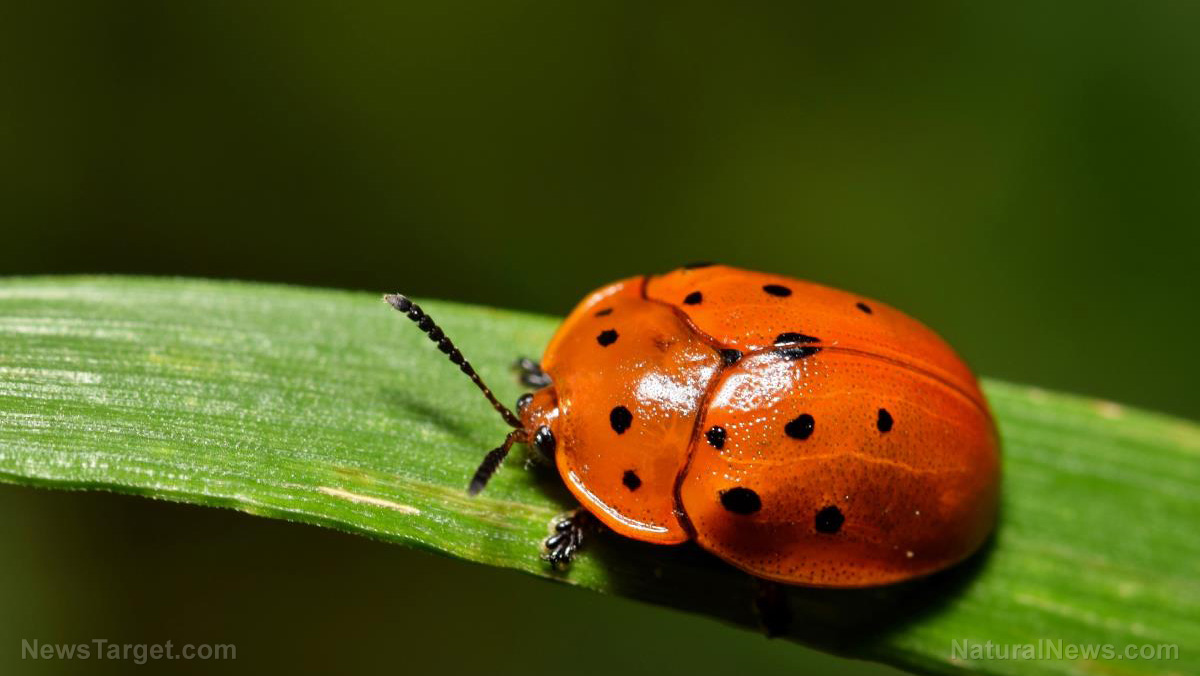
Local authorities are hard-pressed to contain the outbreaks and protect resources from further destruction. In Canada's British Columbia (BC), mountain pine beetles have infested enough trees to build nine million homes but demonstrate no signs of stopping in the near future.
Spruce beetles are coming out of hiding as well, threatening to infest spruce trees in BC and in the U.S. Similar infestations could be seen in parts of Europe due to a historic succession of droughts that have left forests ripe for pests. In fact, about a dozen European countries are struggling to contain their spruce beetle outbreaks.
State authorities across the U.S. are also sounding the alarm about sightings of spotted lanternflies. The pests, endemic to China and South Korea, feed on more than 70 plant species, including some that are critical to the agricultural landscape in the eastern U.S.
Earlier this month, Ohio officials also reported troubling sightings of the longhorned tick, another bug found in China, Korea and Japan. Officials are concerned that the ticks could transmit fatal diseases to cattle and deal major economic losses.
Experts are unsure if these sightings are due to a greater proliferation of bugs or if locals are just spending more time outdoors due to quarantine protocols for COVID-19. Nonetheless, local authorities are encouraging residents to kill bugs that turn up in their areas and to report sightings.
Beetles are decimating lumber supplies
Mountain pine beetles had been killing trees in BC for more than a decade. From 2000-2015, BC authorities estimate that the pests ruined a total of 730 million cubic meters of pine trees, a huge and unprecedented loss to Canada's largest exporter of timber to the U.S. housing market.
Recent projections also indicate that the beetles could kill more than half of BC's marketable pine trees in 2020. BC officials have expressed grave concern that the ongoing beetle infestation could exacerbate the soaring prices of lumber in the global market due to the ongoing pandemic.
In the U.S., people are scrambling to repair their homes during the quarantine, thus tightening remaining lumber supplies. In fact, the demand for lumber has surged beginning late March, but producers expect this strong demand to continue into the fall.
Experts point to human interference and rising temperatures as the major culprits behind the unprecedented proliferation of mountain pine beetles in BC. In order to protect their forests, authorities from neighboring regions took to cutting and burning infested pine and spruce trees.
Besides this technique of cut and burn, Canadian lumber producers are also looking to expand their operations in the southern U.S. as the beetle infestations continue to decimate acres of forests. Nonetheless, experts maintain that the U.S. is far from running out of timber.
Spotted lanternflies are forcing counties under additional quarantine
In addition to COVID-19-related restrictions, some states are also placing counties under quarantine to curb the spread of spotted lanternflies, an invasive pest that can cause significant damage to plants, crops and trees.
In total, the six-legged threat has infestations in four states and has been found in eight.
Pennsylvania has placed 26 counties under quarantine earlier this month due to these infestations. New Jersey followed suit on Sunday, August 16 and quarantined eight.
The insects had been sighted in Pennsylvania for the first time in 2014. Experts suspect that the pests had traveled from China to the U.S. by hitching a ride on a shipment.
State entomologists believe that the recent infestations are the result of a lack of control. The flies are invasive insects that have no natural predator, leaving it up to residents to control their populations.
In fact, state officials are encouraging residents of quarantined counties to do their part in curbing the infestations by killing adult spotted lanternflies and scraping their egg masses off trees and surfaces.
Both states have also launched efforts to scour their most affected areas for the tree-of-heaven, an invasive tree species that scientists believe the spotted lanternflies need in order to reproduce.
Asian longhorned ticks continue to creep across the U.S.
In the midwest, officials with the Ohio Department of Agriculture (ODA) have confirmed sightings of the notorious Asian longhorned tick in Gallia County.
The tick was first detected on a stray dog in the county, which was later transported to a shelter in Canal Winchester. The tick was then sent to a federal lab for confirmation of the species.
Since 2017, the longhorned tick has had confirmed sightings in 13 states, according to recent reports from the Centers for Disease Control and Prevention (CDC).
In other countries, the Asian longhorned tick is known to transmit serious illnesses to people, such as Lyme disease and Japanese spotted fever.
The tick can also be a carrier of other pathogens and, if left to proliferate, could cause massive infestations on both animals and people.
Moreover, female longhorned ticks can reproduce without a male. Therefore, it takes just one tick to create an established population in a new location, said ODA State Veterinarian Tony Forshey.
Tick populations also tend to be greater in or near counties with large horse, cattle and sheep populations. To protect against possible outbreaks, farmers are encouraged to check their animals for ticks on a regular basis.
ODA officials also recommend practicing preventative measures like trimming grass, pulling out weeds and clearing brushes on pastures to control tick populations. (Related: Small and incredibly dangerous: Follow these tick safety tips to prevent infections.)
Read more articles about ticks, beetles and other pests at Environ.news.
Sources include:
Please contact us for more information.























